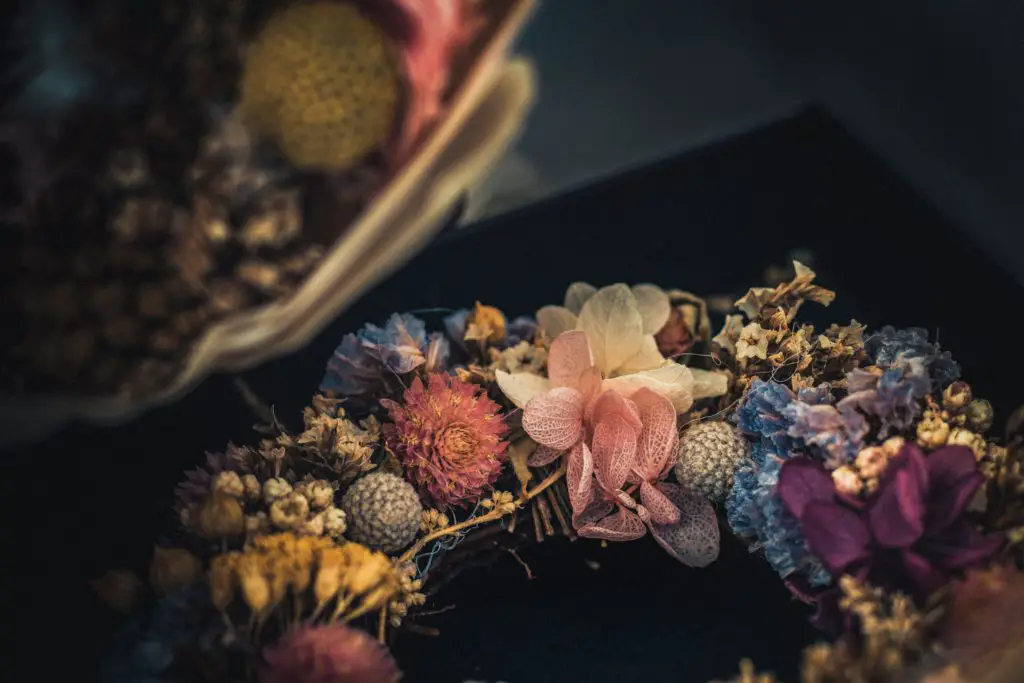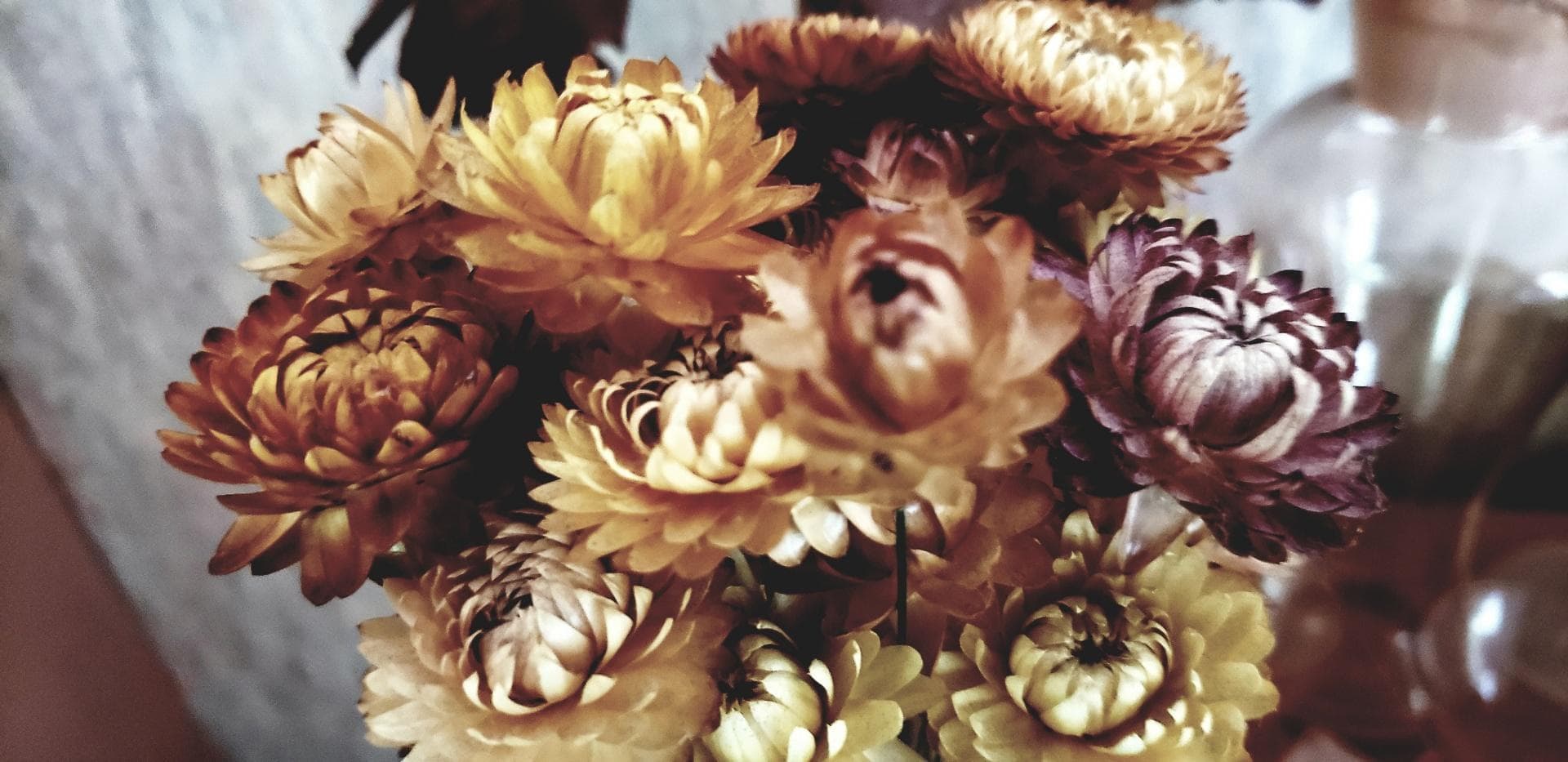Flowers appeal to our senses. The bright colors and intricate details appeal to our sight. Its sweet scent appeals to our smell. Its soft, smooth petals appeal to our touch. What more is there not to like with flowers.
Unfortunately, fresh flowers don’t last very long.
Thanks to fabulous and easily accessible technology, we can now dry flowers to make them last longer. In this article, we will discuss how to make dried flowers.
Table of Contents
Dried Flowers, Anyone?
Flowers are great ornaments and preserving them is just one of the ways to make it last long enough for everyone to appreciate the beauty. We use dried flowers in pressed flower pictures, several bouquets, potpourri, wreaths, hats, and other decorative items for our doors, walls, and windows.
Dried flowers in these ornaments can be seasonal, too. Be it on Christmas, Halloween, or Thanksgiving, dried flowers bring out its own elegance.
Drying flowers is one of the methods that are easy to do, not complicated or time-consuming. It is good for beginners who haven’t tried or for those who are too busy to experiment with other methods.
Choosing the Right Flowers
There are flowers that are suitable and great for drying while others are so fragile that drying them is not an option. Bracts (modified leaves that look like flowers such as bougainvillea, anthurium, poinsettia, etc.), cultivated and wild grasses (love-in-a-mist seed pods, blue sage, larkspur, and yarrow), seed heads, foliage (leaves), and everlasting flowers are suitable materials for drying. Everlastings to choose from are strawflower, globe amaranth, cockscomb, statice, baby’s breath, money plant, Chinese lantern, bells of Ireland, ammobium, helipeterum, and xeranthemum. Zinnias and marigolds are also great for drying.
You may also ask someone at the florist shop for suggestions and who knows, they might sell you some broken-stemmed flowers they discard at a discount.
Make sure that the flowers you choose are not yet past their prime or about to wilt. If you have your own garden, harvest them after the sun has dried the dew, select those at full bloom past the bud stage.
Preparation
Clip off the stems leaving just 1 inch or less. Check the flowers for any damage and signs of deterioration. Remove them and make sure there are no bugs or other insects in between the petals.
Gently mist the flowers with clean water and let the water evaporate. This will help clear the flowers of any remaining pesticides.

Ways on How to Dry Flowers
Pressing
This is something easy and quick, and best for flowers with flat faces. Pansies, petunias, violas, and daisies are good to press to be used in decorating stationery, bookmarks, or making pictures.
Use unglazed paper such as newsprint, blotting paper, or old telephone books. Place flowers on paper without overlapping. Cover with another sheet of paper and weigh it down with a heavy object. Let it dry for two to four weeks. Although the contours are lost and the flowers become flat, these are best with flat DIY craft projects.
Air-drying or Hanging
This is probably the easiest and the best method for some of the flowers. Just remove the leaves, tie the stems with a string or wire, and hang the flowers upside down in a warm, dry, dark place until it dries. An attic, a closet, or the pantry are good places to hang flowers for air-drying. Drying time may vary. Check how they feel after a week. When they feel crisp, take them down and store in paper bags or boxes.
How to Dry Flowers with a Dehydrator
An advantage of having a food dehydrator at home is not only you could dry food items in it, but also you can dry flowers for DIY crafts.
RELATED ARTICLE: 15 Reasons Why You Need To Invest in a Food Dehydrator
Using a food dehydrator will keep the flowers’ shape, retain its color and even their fragrance. Potpourris are made by drying petals on screens or trays. Spread them in a single layer with no overlapping petals, leaves, or stems.
Preheat your dehydrator to 100°F which is the ideal temperature for drying flowers. If the flowers have thin petals or leaves, you may lower it up to 95°F, and if these are thick, you may adjust it up to 110°F. If you are living in an area where humidity is greater than 50%, you may increase the temperature to 125°F.
To enhance the scent when making a potpourri, add 10 drops of essential oil and 3 tablespoons of ground orris root for every quart of drying materials as a fixative.
Check the flowers every hour to see how they are drying. It may take up to four hours for the flowers to dry. Allow the flowers to cool before checking for dryness. The flowers should no longer be flexible and no more moisture.
Store the dehydrated flowers in airtight containers and put them in a cool dry place. You may add 1 to 2 tablespoons of silica gel in the container to help keep moisture away.

Using Desiccant
A desiccant is any substance that speeds up the drying process by absorbing moisture. Flowers can be dried by burying them in desiccants such as sand and borax mixture, cornmeal and borax mixture, and silica gel.
Usually, flowers are buried in silica gel in a closed container and left to dry for one week. Silica gel is reusable by drying them again in a warm oven.
Silica gel can also speed up drying in the dehydrator and preserves the colors and shape of the flowers. Put desiccant at the bottom of containers 1⁄2 inch high but no higher than 3 1/4 inches. Place flat-faced flowers face down with petals resting on the sand. Bell-shaped flowers should be laid on their sides. Rounded double flowers should be dried with their heads up.
Gently sprinkle desiccant between the flowers and into every petal. Place containers inside the dehydrator. Most flowers will dry less than 24 hours.
To test for dryness, take a flower and scrape off the desiccant. Gently tap the flower. If you hear a crisp sound just like paper, then it’s dry. Remove flowers by pouring off desiccant. Store in airtight containers until ready to use.
Desiccants can also speed up drying in a microwave oven. Prepare a few flowers at a time in a small dish. Put this in the microwave oven along with a cup of water. Cook on medium for 10 seconds up to 3 minutes depending on the thickness of the flower petals. Because conditions are variable in microwave cooking, try to experiment on drying time. Allow the flowers to cool in the drying agent for a few hours to one day.
Final Thoughts
Flowers like marigold, cosmos, zinnia, and daisy are among the most popular to be dried. Dahlia, calendula, chrysanthemum, and aster can also make fine dried flowers. Drying flowers can be a rewarding experience because it is easy to do and may last for many years. You may choose any of the methods discussed above but one thing is for sure, you can create different DIY projects at home using dried flowers.

